Results & Visualization Blog Posts
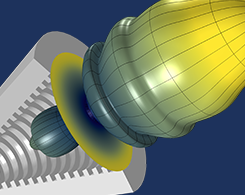
A Simulation Color Table for Engineers with Color Vision Deficiency
Simulation results often use color to present data and emphasize certain takeaways, but what about engineers with color vision deficiency? Cividis is a color table designed specially for this.

How to Create Graphs with Two Y-Axes in COMSOL Multiphysics®
Did you know that you can add a second y-axis to a 1D plot to include two scales of values in your simulation results? This blog post details how and also includes a video demonstration.

How to Generate Randomized Inhomogeneous Material Data
Did you know there is a way to take randomized material data with specified statistical properties determined by a spectral density distribution and use it to generate and visualize results?

How to Manage Multiple Solutions in COMSOL Multiphysics®
3 ways to manage multiple solutions in COMSOL Multiphysics®: Combine 2 solutions into 1, store the solutions in different data sets, or join the solutions to compare them.
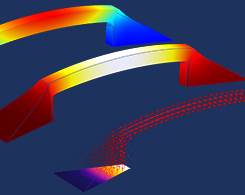
Exploiting Maximum Principles to Save Time and Resources
By exploiting maximum principles in large and complex models, you will save time and computational resources without having to buy a bigger computer or leave your model to solve overnight.

How to Postprocess Fields over Arbitrary Geometries
Check out this useful modeling trick: You can query the results of your model within an arbitrary geometric subregion by implementing an integration during postprocessing.
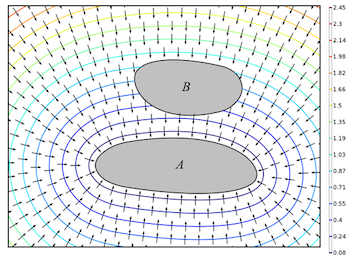
How to Compute Distances Between Objects in COMSOL Multiphysics®
Compute the distance between two deforming objects in the COMSOL Multiphysics® software. Here’s how…

Generating Animations to Visualize Your Simulation Results
Why create animations from your COMSOL Multiphysics® simulation results? We share 4 reasons in this blog post.
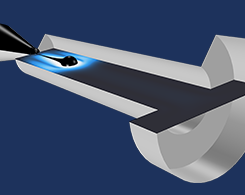
Enhance Your Visualization Plots with 6 New Color Tables
We go over 6 new color tables for visualizing modeling results: Twilight, Aurora Australis, Aurora Borealis, Jupiter Aurora Borealis, Heat Camera, and Heat Camera Light.

Plotting the Algebraic Residual to Study Model Convergence
Learn how to use the residual operator to plot the algebraic residual of your model, as well as visualize and understand the convergence properties of turbulent flow simulations.

Using Annotation Plots in Your 2D and 3D Plot Groups
You can label the plots of your simulation results with names, comments, and values of quantities evaluated at specified locations. How? By adding annotation plots!
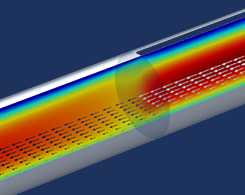
Analyze Thin Structures Using Up and Down Operators
Modeling complex geometries with thin structures can be very costly in terms of computational effort. Up and down operators are a way to efficiently and accurately compute these models.
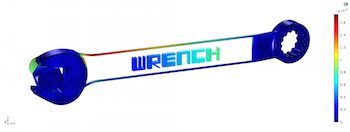
Postprocessing Local Data Using Component Coupling
Derive numerical values. Create new coordinate systems. Link different components in the same model. How can you accomplish all of these tasks? By using Component Coupling operators.

Useful Tools for Postprocessing in COMSOL Multiphysics
Layering plots; style inheritance; enabling and disabling grids, axes, and legends; showing mesh plots, and more: We go over some useful tools for postprocessing your simulation results.
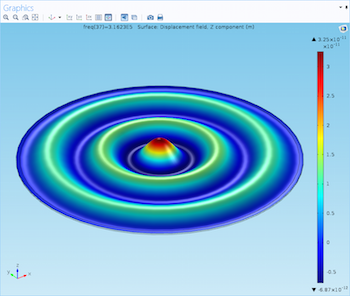
Using Deformations to Visualize Physical Motion
Postprocessing and visualization can help enhance your understanding of simulation results, and using plots to illustrate physical motion allows you to put everything into perspective.
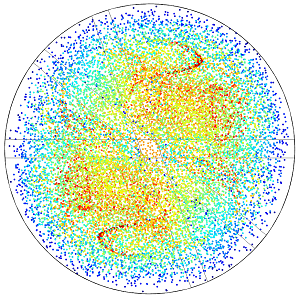
Application-Specific: Polar, Far-Field, and Particle Tracing Plots
When postprocessing your electromagnetics models, you can use polar, far-field, and particle tracing plots to effectively display your results. Learn how to use these 3 plot types here.
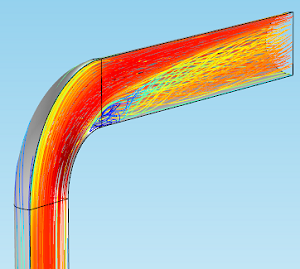
Visualizing Fluid Flow with Streamline Plots
As part of our blog series on postprocessing, we demonstrate the use of streamlines to visually describe fluid flow in your simulations. Learn how with an example of flow through a pipe elbow.
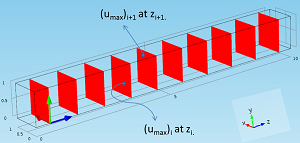
Maximum Evaluations on Parallel Sections
Postprocessing trick: You can evaluate and plot the maximum, minimum, average, or integration value of any variable at various parallel sections along the axial coordinate of your model.
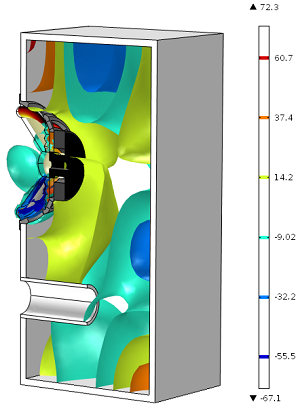
Making Waves with Contour and Isosurface Plots
In this installment of our blog series on postprocessing your simulation results, learn how to use contour and isosurface plots to show quantities on a series of lines or surfaces.
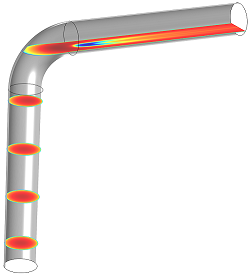
Using Slice Plots to Show Results on Cross-Sectional Surfaces
In this installment of our blog series on postprocessing your simulation results, we demonstrate slice plots, an easy way to visualize physics behavior on many different parts of your model.

How to Get the Most out of Arrow Plots in COMSOL Multiphysics
What are arrow plots and why are they useful? We answer these questions and demonstrate how to use this feature in this installment of our postprocessing series.
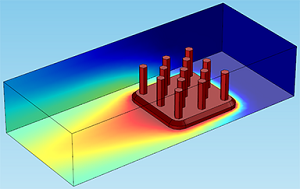
Surface, Volume, and Line Plots: Visualizing Results on a Heat Sink
3 of the most common plot types used in postprocessing: surface, volume, and line plots. Learn how to use these plot types for your simulation results and when to use each option.

Combining Parallel Slices to Create an Animation
Want to animate how your 3D steady-state model’s solution is changing along a certain direction? You can do so by combining parallel slices. We demonstrate the 3-step process…
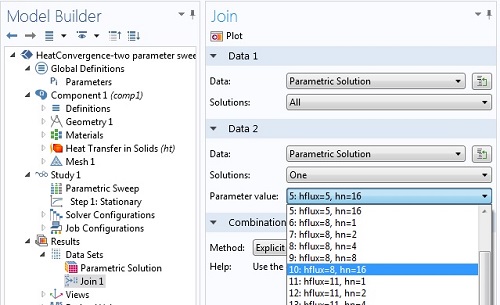
Solution Joining for Parametric, Eigenfrequency, and Time-Dependent Problems
In a follow-up to a previous blog post, we demonstrate how to use the Join feature in the context of 4 types of problems: parametric, eigenfrequency, frequency domain, and time dependent.
